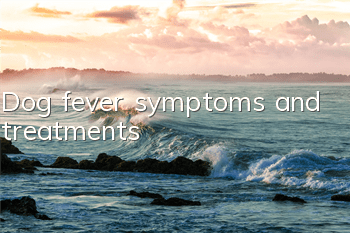How to deal with dog trauma:
1. When the owner finds that the dog is injured and bleeding somewhere, he must first check the seriousness of the wound. If it is not serious, you can remove the hair attached to the wound, expose the wound, and prepare a ring-shaped isolation tape about 2 cm away from the wound, which will facilitate centralized cleaning and disinfection of the wound later.
2. After the wound is exposed, the wound must be cleaned and disinfected. First check to see if there is any foreign matter in the wound. If so, use sterilized tweezers to remove it. Then use saline or iodophor to disinfect the wound, and squeeze out the blood and dirt from the wound while rinsing. After cleaning, use sterile gauze to wipe away the excess disinfectant around the wound. If the foreign body is large and the wound is deep, it is recommended to seek medical treatment in time.
3. After cleaning the wound, be sure to apply medicine to the wound. Anti-inflammatory drugs such as chlortetracycline ointment and Yunnan Baiyao can be used to avoid wound infection.
4. If the dog’s wound is large, it must be bandaged to avoid bacterial infection. If the wound is small but deep, it is not recommended to bandage it to avoid causing anaerobic bacteria and other bacterial infections. In addition, it is best not to bandage wounds when the temperature is very high.
5. After bandaging the dog’s wound, you must pay more attention to the healing of the wound to avoid infection. Change the gauze for your dog every day to keep the wound clean and reduce the chance of infection.
Precautions for handling dog wounds:
1. When cleaning the wound, make sure that the gauze, disinfectant and owner’s hands are all sterile. Before cleaning the wound, thoroughly disinfect your hands.
2. When treating the dog’s wound, the action should be gentle, quick and careful.
3. Make sure the dog’s wound is dry. If it is only a small wound, it is better to expose it to the outside.
4. When necessary, it should be combined with systemic medication to avoid infection and improve the dog’s immune resistance.
5. Pay close attention to the dog’s wounds and pay attention to redness, swelling and suppuration.
6. After a few days, if the dog’s wound still has no scab, and there is still blood or secretions flowing out, it is recommended to take the dog to the doctor.








